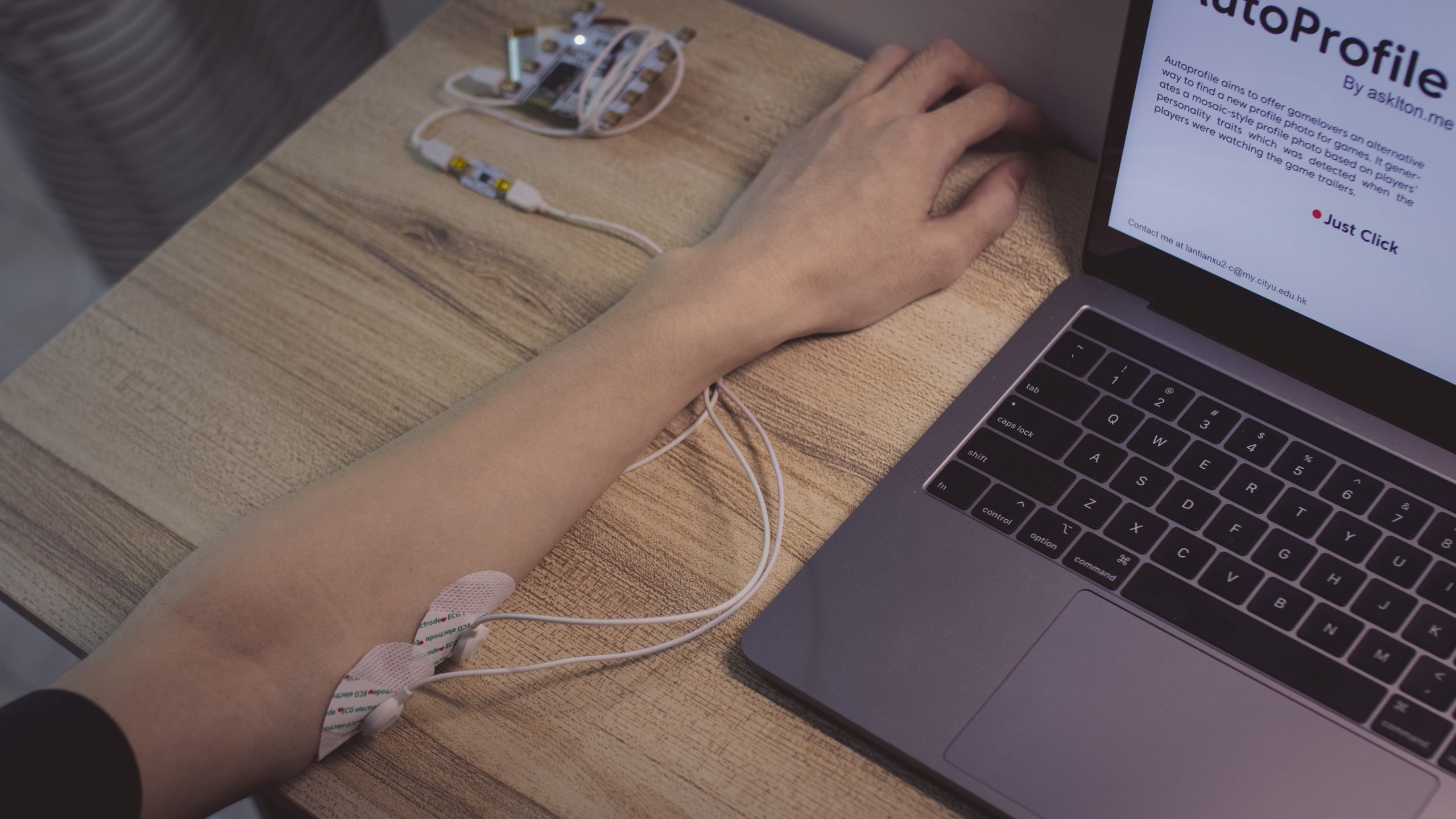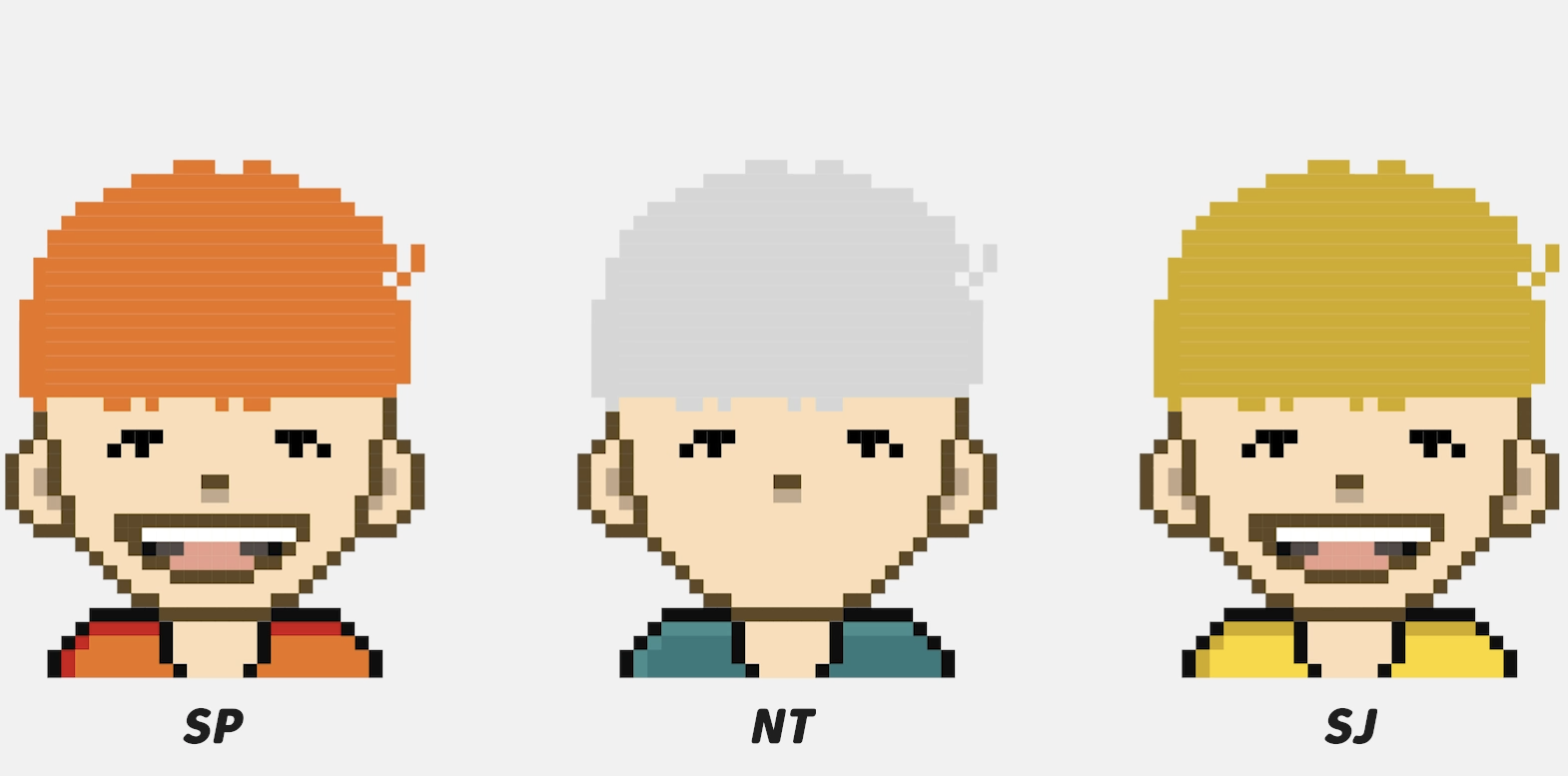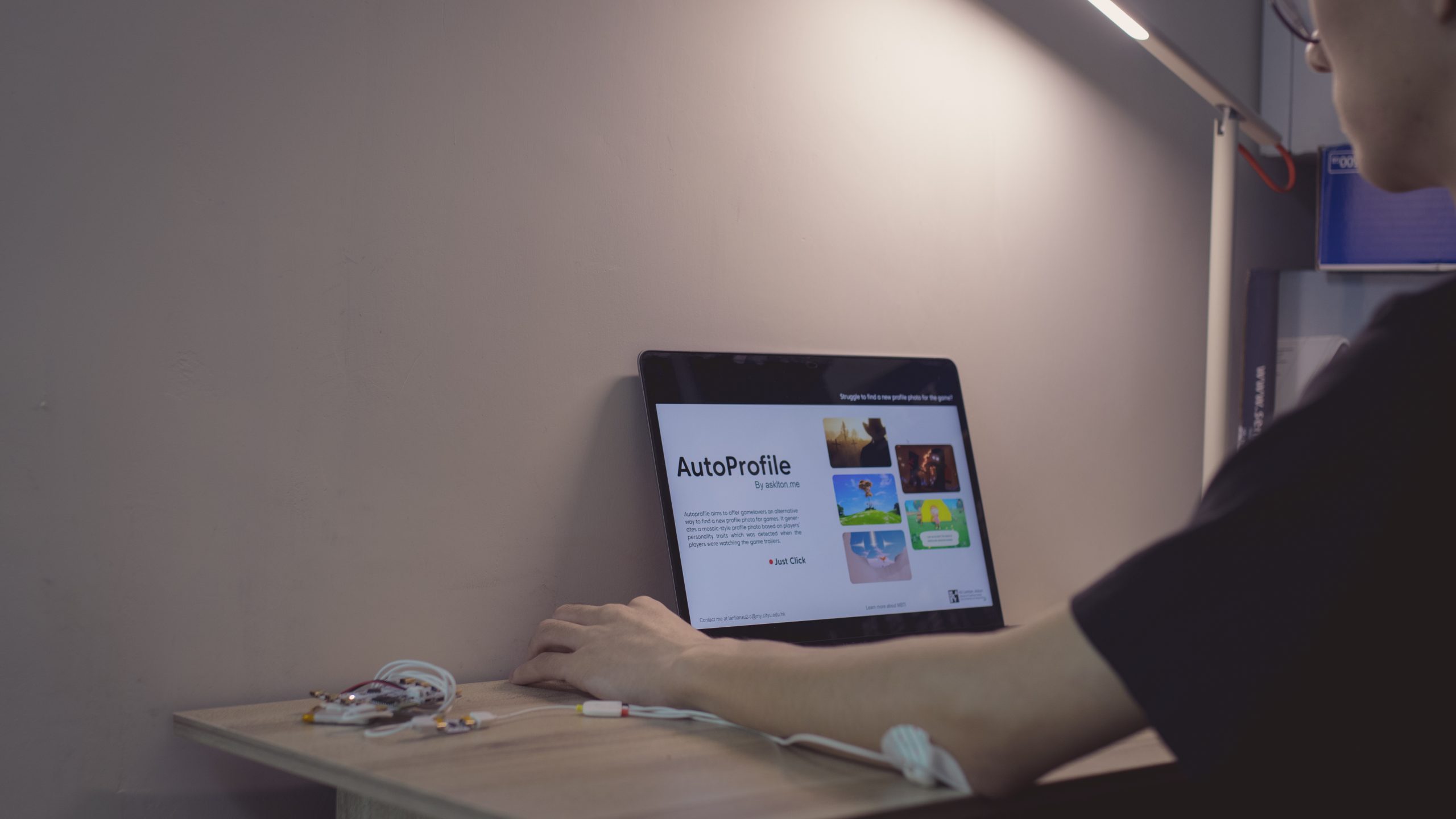AutoProfile
Interactive Installation / 4’42”
Lantian XU, Alston 徐藍天
Abstract
Games have become a more and more common way for entertainment due to the rapid development of internet and mobile devices. For many years, most games would offer some built-in profile photos or bind with users’ social media account, which neither of them is preferred. I present an alternative, AutoProfile, which is designed to be able to auto-generate a profile photo based on users’ personality through their EMG signals while watching a game trailer.
Description
AutoProfile offers a process that takes a relatively short time and is as much implicit as possible to smooth the experience. Most users would watch game trailers before they decide to play them, which could be a good opportunity to obtain some feedback from users.
Hence, I propose a platform to auto-generate a mosaic-style profile photo while watching a game trailer where the profile photo style is based on users’ personalities. Users are hardly likely to fill in an old-fashioned personality questionnaire as it mostly takes serval minutes and consists of over 50 questions. My approach is, however, to adopt a creative and implicit process.
Electrical signals are proved to be closely related to human emotions and personalities. With the help of machine learning, a well-trained model is able to predict users’ personalities based on their EMG signals.
Artist Statement
Being raised in Shanghai and now living in Hong Kong, Lantian Xu is especially interested in how an individual experience and view the world after they have explored a lot around the world. That is, to find his answer to who I am and who we are in today’s world. The world has been changing dramatically since late 2019, and experience of encountering diversity, cultural shock and different systems changes every individual. My works intend to emphasis on the sense of identity that links individual and the whole.
Different geographic locations, different culture, different societies have formed an individual that varies a lot from others in a conventional way. In a world that everything can be labelled and digitalized, how an individual now identifies themselves in all dimensions and distinguish from others could be challenging. My artwork aims to visualize identity with virtual tools in a virtual world.
The Roof (2017), a group artwork, recurred how a university board/manager affects the students’ campus life ironically, based on the roof collapse accident of the stadium on campus in 2016. The roof of the stadium was not originally designed for greening, in other words, planting trees on it may cause collapse. A stadium model with a physically collapsible roof was made, where the user may choose to plant trees for afforest management and attracting more students. Meanwhile, planting trees without strengthening the roof will cause collapse once exceeding the weight limit. This is more than mismanagement, but how people affect each other in either a positive or negative way.
ITEMS (2018), projected many barcodes on a white wall, and each barcode contained basic information of a person. Barcode is usually seen on items in supermarkets to distinct from each other. Unlike the QR code, a barcode can only contain limited information, and it is not enough to locate the person. An individual is not treated as flesh, but 1 and 0s in computer language. The audience could choose to print their own barcode and stick on the wall as part of the work. It reminded the audience of the relationship with others and the vivid characteristics of themselves, which make everyone unique.
FoundLost (2019), a group artwork exhibited in Singapore. Singapore is a young nation that citizens mostly originally came from China, Malaysia and Western. How they think of their identity could be struggling as a number of young people know little about their origins. The audience was asked to pin their origins on a world map, and the result showed that the sense of nationality may be superior to the sense of ethnic in just three or four generations. They were also asked to choose 6 stickers that each one represents a custom from an ethnic group. It was found that each ethnic group has great impacts on others in many dimensions.


